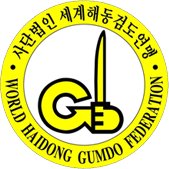Hapkido
Hapkido is a dynamic and highly eclectic Korean martial art. It is a form of self-defense that employs joint locks, grappling and throwing techniques of other martial arts, as well as kicks, punches, and other striking attacks. There is also the use of traditional weapons, including knife, sword, rope, cane, short stick, and the staff which vary in emphasis depending on the particular tradition examined.

Hapkido contains both long- and close-range fighting techniques, utilizing jumping kicks and percussive hand strikes at longer ranges and pressure point strikes, joint locks, or throws at closer fighting distances. Hapkido emphasizes circular motion, redirection of force, and control of the opponent. Practitioners seek to gain advantage through footwork and body positioning to incorporate the use of leverage, avoiding the use of strength against strength.
The art adapted from Daito-ryu Aiki-jujutsu as it was taught by Choi Yong-Sool when he returned to Korea after World War II, having lived in Japan for 30 years. This system was later combined with kicking and striking techniques of indigenous and contemporary arts such as Tae Kwon Do, as well as throwing techniques and ground fighting from Japanese Judo. Its history is obscured by the historical animosity between the Korean and Japanese people following the Second World War.
The birth of modern Hapkido can be traced to the efforts of a group of Korean nationals in the post Japanese colonial period of Korea, Choi Yong-Sool (1904–1986) and his most prominent students; Seo Bok-Seob, the first student of the art; Ji Han-Jae (born 1936), one of the earliest promoters of the art; Kim Moo-Hong, a major innovator; Myung Jae-Nam, a connector between the art of Hapkido and aikido, Myung Kwang-Sik the historian and ambassador, all of whom were direct students of Choi or of his immediate students







